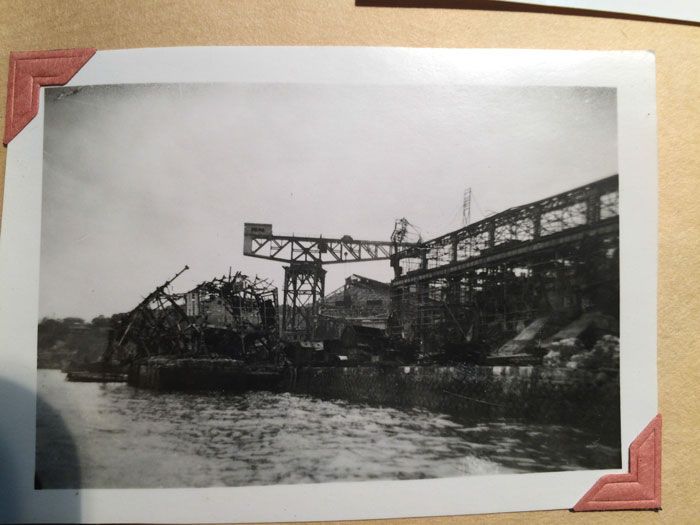Six weeks after Nagasaki
❮
 ❯
❯
1 / 1

Leroy Fadem volunteered for service in the US Navy early in March 1942, about a week after his 21st birthday. Initially, he was assigned as a torpedo officer and gunnery officer on a destroyer, the USS Stevens. He served there for about two years before being named executive officer and navigator of the USS LST-871, a brand new ship designed to support amphibious landings of US military forces. On Sept. 24, 1945, the LST-871 sailed into Nagasaki Harbor as part of the first US Navy task force to approach that city since an atomic bomb had been dropped on it about six weeks earlier. Along with Fadem, then 24, and the rest of its Navy crew, the LST-871 carried several hundred US Marines, part of a larger contingent of the 2nd Marine Division that the task force was bringing to occupy Nagasaki.Now 95 and living in New Rochelle, New York, Fadem remembers Nagasaki as a scene of total devastation, with bodies still floating in the harbor. 'Everybody came away from it very devastated with what they saw,' Fadem said in an August 2016 interview. 'It was flattened, with just wreckage all around.'Fadem said he does not remember much discussion of radiation dangers before his ship arrived at Nagasaki. But LST-871 crewmembers were restricted from going beyond where the ship had docked, not far from a damaged police station. Though its crew wasn't allowed into the blast zone, the LST-871 had docked 'not that far away from ground zero,' Fadem said. During the week his ship was in Nagasaki Harbor, Fadem was able to take a few photos of the stricken city, including this view of part of the Mitsubishi industrial complex that was one of the reasons Nagasaki had been chosen as a possible target. He has shared those shots—and his best recollection of what they depict—with the Bulletin, for publication 71 years after a US B-29 bomber nicknamed Bockscar dropped a plutonium weapon nicknamed Fat Man on Nagasaki, Japan, instantly incinerating tens of thousands of human beings. This is what the city looked like, six weeks later.
John Mecklin | August 7, 2016
An exclusive slide show of photos taken when the first US Navy task force arrived in Nagasaki, Japan, just weeks after the city was levelled by an atomic bomb.